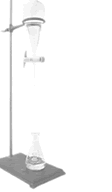 |
|
 |
 |
 |
|
Research Interests involve the development of new methodology for asymmetric synthesis including asymmetric catalysis and the exploitation of chiral-pool compounds. These products are applied towards the synthesis of targets of biological interest. The synthesis of anticancer compounds which have novel or unknown modes of action and identification of their biological targets is one of our main applications. We also have interest in the isolation of new Natural products from various terrestrial and aquatic environments. Specific projects may be divided into four areas, although all are interrelated.Synthetic Methodology A: Development of new useful chiral building blocks from the inexpensive chiral-pool compounds glucose and tartaric acid is being actively investigated. These chirons are then applied towards the synthesis of target compounds, usually Natural products and analogs, that have demonstrated biological activity.
Synthetic Methodology B: The structure based design and application of new C2-symmetrical chiral ligands for use in the asymmetric catalysis of organic transformations is the key methodological development. Ligands employing novel features are designed and modeled in-silico, promising targets are then synthesized in the lab. Currently, two novel ligands are under investigation. Other efforts centre on the preparation of new polymer linked catalysts and their applications.
Synthesis of Anti-Cancer Pharmaceuticals and Analogues. Current work centers on the anticancer drug pancratistatin, an important lead compound in pre-clinical studies at the National Cancer Institute (USA). At Brock, we have developed methods for rapid synthetic access to the core structure of the drug. Our approaches allow for structural modifications at all key sites in the molecule, a feature important for structure based anticancer drug design. Systematic structure-biological activity correlations are being conducted on structural analogs of the natural drug in order to define the minimum cytotoxic pharmacophore and the development of a three dimensional model of the biological receptor involved. Our synthetic efforts, in conjunction with collaborative screening with Professor G.R. Pettit at ASU's Cancer Research Institute, have allowed us to narrow the active pharmacophore down to only three possible structures at present. Other synthetic targets include inhibitors of ceramide-glycoside forming and carbohydrate processing enzymes, some which have anticancer activity. We are focussed on transition state mimics for glucosyl ceramide synthetase and asymmetric entries to polyhydroxy indolizidine alkaloids.
Natural Product Isolation. Nature has provided us, through processes of natural selection and species evolution, natural, structurally diverse libraries of potentially valuable biologically active compounds. Many pharmaceuticals marketed today are based on natural product leads. The identification of new bio-active natural products from terrestrial plant sources is under investigation in our laboratory. Work is currently focused on groups of alkaloids and aromatic compounds isolated from specimens of amaryllis and diterpenoids isolated from a southern Ontario plant. We are also purifying natural products extracted from the Gulf tunicate Styela sp. Isolation work involves extensive use of chromatographic separation methods as well as spectroscopic techniques for structure elucidation.